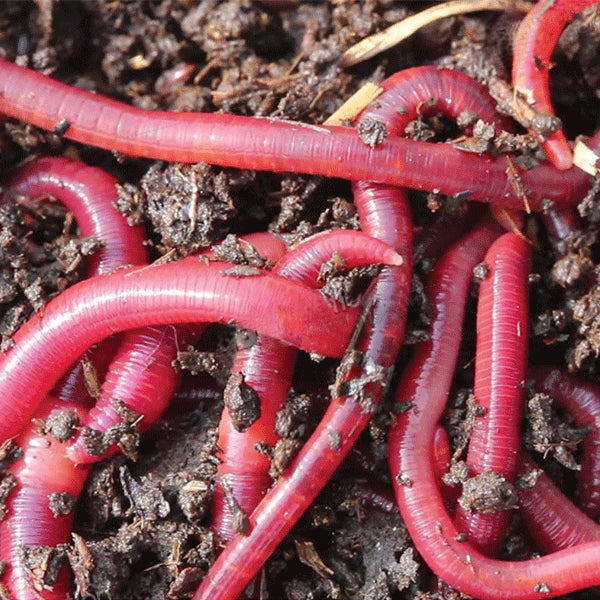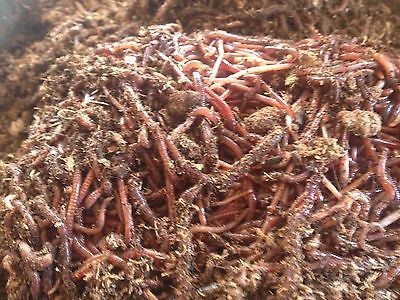Live red wigglers: Transform organic waste
Wiki Article
The Ultimate Overview to Red Wigglers for Healthy And Balanced Soil
The role of red wigglers, clinically recognized as Eisenia fetida, in soil health is a topic of enhancing interest amongst sustainable horticulture fanatics and farming specialists alike. These microorganisms not only recycle natural waste yet also boost dirt fertility through their nutrient-rich castings.What Are Red Wigglers?
Red wigglers, clinically called Eisenia fetida, play a vital role in composting and soil wellness. These earthworms are specifically appropriate for vermicomposting, a procedure that uses their all-natural behaviors to break down organic issue successfully. Unlike various other earthworm varieties, red wigglers prosper in abundant organic environments, making them ideal for garden compost containers and worm farms.Gauging concerning three to 4 inches in size, red wigglers have a distinctive reddish-brown coloration and a fractional body that helps in their wheelchair through rotting products. They are detritivores, suggesting they feed on rotting organic compounds, including kitchen scraps, plant particles, and paper items. red worms. Through their consumption of these materials, they assist break down complicated substances, transforming them right into nutrient-rich spreadings that enhance dirt quality
Red wigglers are also prolific dog breeders, capable of reproducing rapidly under optimal conditions. Their adaptability to various settings enables them to grow in a variety of composting systems. By understanding the biology and eco-friendly relevance of red wigglers, garden enthusiasts and farmers can harness their capabilities to improve dirt health and wellness and promote sustainable techniques in agriculture.

Benefits of Red Wigglers
The numerous advantages of incorporating red wigglers into composting practices considerably enhance soil health and fertility. These earthworms, clinically called Eisenia fetida, excel at damaging down raw material, transforming kitchen scraps and lawn waste right into nutrient-rich vermicompost. This process not just increases decay but also enhances the dirt with important nutrients such as nitrogen, phosphorus, and potassium.Moreover, red wigglers enhance dirt structure by creating aggregates that facilitate aeration and water retention. Their burrowing activities promote a well-aerated atmosphere, permitting origins to access oxygen more efficiently. This enhanced aeration likewise fosters advantageous microbial activity, which is crucial for nutrient biking and total soil vitality.
In enhancement to improving dirt make-up and framework, red wigglers contribute to pest administration. Their existence in the soil helps reduce hazardous nematodes and various other insects, lowering the need for chemical treatments. The application of vermicompost leads to increased plant strength against illness, advertising healthier development.
Establishing a Worm Container
Establishing a worm bin can be a gratifying venture for those looking to boost their composting efforts. The primary step is picking a suitable container, preferably made from plastic or wood, with an ability of at the very least 10 gallons to accommodate the worms and their food. Guarantee the container has sufficient air flow-- drill tiny openings in the cover and sides to advertise air flow while preventing excess wetness buildup.
Present the red wigglers right into the container, allowing them to acclimate to their brand-new atmosphere. Preferably, begin with a population of concerning one extra pound of worms per square foot of surface location. Place the worm container in a place that maintains a stable temperature level, preferably in between 55 ° F and 77 ° F. With these fundamental actions, your worm container will be prepared to thrive in the quest of healthy and balanced soil.
(red wigglers for sale)
Feeding Your Red Wigglers
When it comes to nurturing red wigglers, recognizing their dietary demands is important for preserving a healthy worm container. These worms thrive on a varied diet plan, primarily made up of natural matter.Part control is vital; overfeeding can cause smell issues and draw in pests. An excellent regulation of thumb is to offer food that is approximately equivalent to the weight of check the worms in the container weekly. Screen the intake price and readjust feeding amounts accordingly.
To advertise a balanced diet regimen, aim to give a mix of nitrogen-rich environment-friendlies, such as vegetable peels, and carbon-rich browns, such as dried out leaves or cardboard. Additionally, preserving proper moisture levels is necessary-- food scraps should be damp but not soaked - red worms. By thoroughly handling their diet plan and environment, you will make sure that your red wigglers continue to be healthy and productive, adding properly to the composting process
Using Worm Spreadings in Dirt
Including worm spreadings right into dirt can considerably enhance its health and fertility. Worm castings, likewise understood as vermicompost, are an abundant source of nutrients, consisting of nitrogen, phosphorus, and potassium, essential for plant growth. When contributed to soil, these spreadings boost its framework by enhancing aeration and boosting wetness retention, which is particularly advantageous in deserts.In addition, worm spreadings present helpful bacteria that advertise a healthy and balanced dirt community (red worms). These microbes aid in damaging down raw material, making nutrients a lot more readily offered to plants. The visibility of these microorganisms likewise aids reduce soil-borne illness, minimizing the demand for chemical plant foods and chemicals
To utilize worm spreadings effectively, blend them into the leading couple of inches of soil prior to growing or use them as a top dressing around developed plants. A recommended application price has to do with 10-20% spreadings blended with dirt to maximize nutrition availability without frustrating the plants.
Verdict
In conclusion, red wigglers, or Eisenia fetida, play a critical function in enhancing dirt health and wellness through their vermicomposting tasks. Ultimately, the combination of red wigglers into dirt management strategies advertises sustainable agriculture by reducing reliance on chemical plant foods and cultivating useful microbial task.Report this wiki page